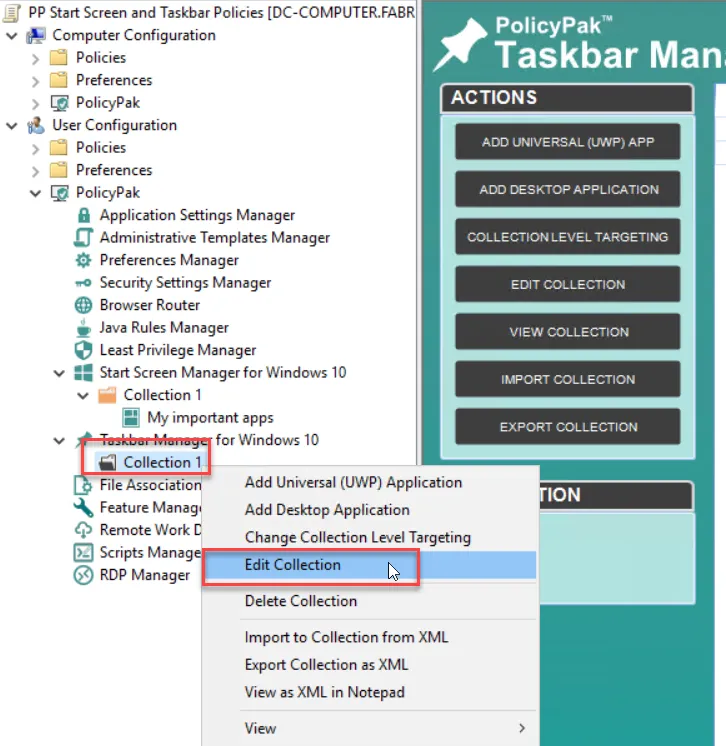Taskbar Manager Settings
Collections are also present (and required) for Endpoint Policy Manager Taskbar Manager. In the Quickstart, we created a collection by right-clicking within Endpoint Policy Manager Start Screen Manager or Endpoint Policy Manager Taskbar Manager and selecting Add | New Collection. To see the collection options, you can right-click on the name of the collection and select "Edit Collection," as seen in Figure 43.

Figure 43. Editing collections for Taskbar Manager.
The Endpoint Policy Manager Taskbar Manager Pinned Collection Editor can be seen in Figure 44.

Figure 44. Endpoint Policy Manager Taskbar Manager Pinned Collection Editor options.
The fields inside the Taskbar Manager Pinned Collection Editor are as follows:
- Collection Name: The name of the collection you'll be creating, which isn't displayed on the endpoint.
- Comment: Space for optional comments to be added.
- State: Determines if the collection should apply or not.
- Action: Can be set to "Merge" or "Replace." Selecting "Merge" maintains OS defaults and anything a user has manually pinned to the Taskbar while adding your new items. Selecting "Replace" removes OS defaults and anything a user has manually pinned while replacing them with your new items.
- Use custom advertisement tile: When desktop items are pinned, they must also be contained in a Start Menu advertisement tile. The default behavior can be seen in Figure 45, but this can be changed. If no pinned applications are also in Start Menu groups, then a URL is used as a fallback display. The icon is then simply a URL within an advertised group.

Figure 45. Pinned desktop icons will appear in the Endpoint Policy Manager Start Screen Manager advertisement group, or a group of your choice.